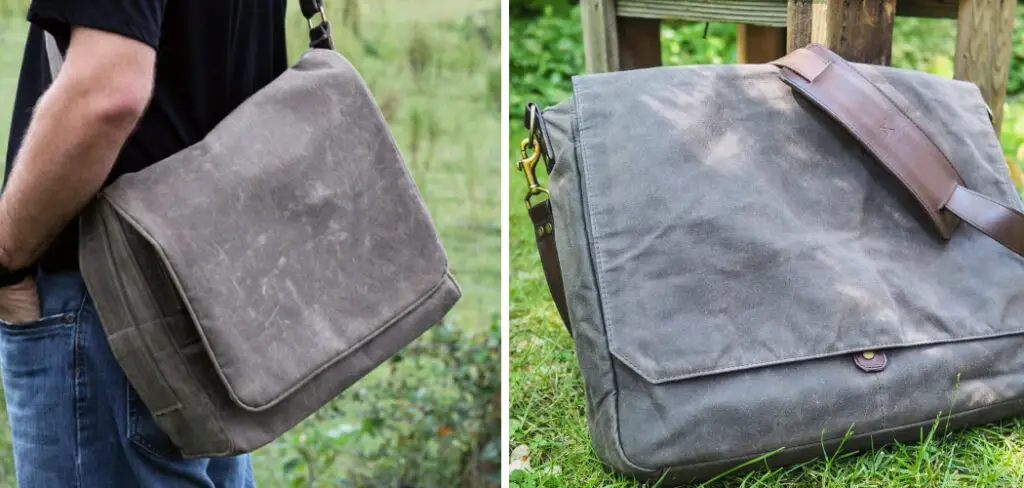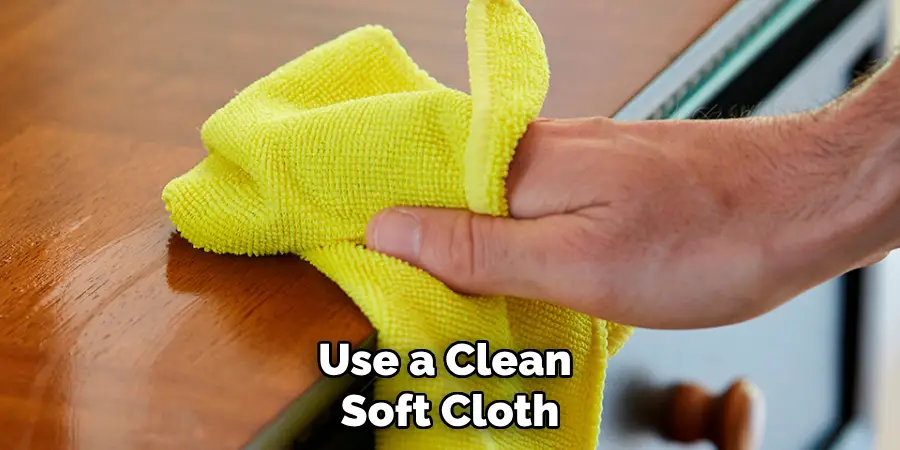Ah, waxed canvas. The classic material adds a timeless touch to any gear – from bags and jackets to boots and backpacks. Whether you’re preparing for a hunting trip or just want your trusty rucksack to look as good as new again, learning how to wax canvas is essential. Luckily, it’s surprisingly easy!

In this blog post, we’ll show you exactly what materials you need, share some tips on getting started with waxing canvas at home, and explain why the process is so important for maintaining your favorite items. Read on to discover everything you need to know about how to wax canvas – no matter its purpose – so it remains in top condition!
Necessary Items
To get started, you’ll need a few key items. These include:
- Canvas material: This can be a bag, jacket, or any other canvas item that needs waxing.
- Wax: Several types of wax are available for this purpose, including paraffin, beeswax or specialized wax blends made specifically for canvas.
- Heat source: This can be a hairdryer, heat gun, or iron.
- Brush: A soft-bristled brush will help spread the wax evenly onto the canvas.
- Newspaper or drop cloth: Protect your work surface from dripping wax.
10 Steps on How to Wax Canvas
Now that you have all the necessary items, it’s time to start waxing! Follow these simple steps to achieve the best results:
Step 1: Protect Your Work Surface
Before you start, lay down some newspaper or a drop cloth to protect your work surface from dripping wax. This will make cleaning up easier once you’re finished.
Step 2: Prepare the Wax
If using a bar of wax, grate it into small pieces. If using liquid wax, simply heat it according to the instructions on the label. Make sure to use a heat-resistant container for melting the wax.

Step 3: Clean Your Canvas
Before applying any wax, clean your canvas thoroughly. Use a mild soap and water to remove any dirt or stains. Let it completely dry before moving on to the next step.
Step 4: Heat Your Canvas
To ensure the wax is evenly applied, it’s important to warm up the canvas. You can use a hairdryer or heat gun on low heat or place the item in a clothes dryer for a few minutes.
Step 5: Apply the Wax
Apply an even layer of wax onto the warm canvas using your brush. Make sure to cover every inch of the fabric for maximum protection.
Step 6: Melt the Wax
Use your heat source (hairdryer, heat gun, or iron) to melt the wax into the fabric. Keep it at a safe distance and move it around constantly to prevent burning or scorching.
Step 7: Spread the Wax
Once the wax is melted, spread it evenly across the canvas with your brush; work in small sections to ensure all areas are covered.
Step 8: Reapply Wax as Needed
If you notice any areas that need to be fully coated, simply apply more wax and repeat steps 6 and 7 until you are satisfied with the coverage.
Step 9: Let it Dry
After the wax is evenly applied and melted into the fabric, let it dry for several hours or overnight. This will allow the wax to absorb into the canvas fully.
Step 10: Buff Your Canvas
Once dry, use a clean, soft cloth to buff your canvas. This will help remove any excess wax and give it a nice sheen. Your canvas is now ready for whatever adventure awaits!

Learning how to wax canvas is a simple yet essential skill for anyone who owns canvas items. Whether maintaining your trusty bag or getting ready for a rugged outdoor trip, regular waxing will keep your canvas in top condition for years. So gather your materials and try – we guarantee you’ll be amazed by the results!
8 Care Tips for Your Waxed Canvas Item
Now that you know how to wax canvas, it’s important to continue caring for your item to ensure its longevity. Here are 8 top tips for maintaining your waxed canvas:
1. Avoid Using Harsh Chemicals
As mentioned, avoid using harsh chemicals, damaging the waxed coating, and compromising its waterproofing ability. Stick to mild soap or detergent when cleaning your waxed canvas item.
2. Keep Away from Heat Sources
Waxed canvas can be sensitive to heat, so avoid exposure to direct sunlight or high temperatures. This can cause the wax to melt and affect your item’s overall appearance and function.
3. Spot Clean Whenever Possible
Instead of washing your waxed canvas item regularly, try spot-cleaning it whenever possible. This will help preserve the waxed coating and prevent unnecessary wear and tear from frequent washing.
4. Use a Soft-Bristled Brush or Cloth
Always use a soft-bristled brush or cloth to avoid damaging the waxed coating when cleaning your waxed canvas. Harsh brushes or scrubbing can cause the wax to flake and reduce its water-resistant properties.
5. Keep Away from Sharp Objects
Waxed canvas may be durable, but it is not completely resistant to sharp objects. Avoid storing your item with sharp items that can puncture or scratch the material.
6. Re-Wax When Needed
If you notice that your waxed canvas is no longer repelling water effectively, it may be time to re-wax it. This will help maintain its durability and keep your item looking great.
7. Store in a Cool and Dry Place
Always store unused waxed canvas items in a cool and dry place. This will prevent mold or mildew from forming and help maintain its water-resistant properties.
8. Embrace the Natural Aging Process
Finally, remember that waxed canvas is a natural material that will age over time. Embrace this process as it adds character and uniqueness to your item. With proper care, your waxed canvas item can last for many years and even improve with age.
So, enjoy your adventures and let your waxed canvas item tell its story! From the first time you took it on a hike to the countless memories created along the way, each mark and imperfection is a testament to your shared journey.

With these care tips, your waxed canvas item will continue to be a reliable companion on all your adventures for years to come. So explore the great outdoors and let your waxed canvas item be a part of the journey!
Frequently Asked Question
How Often Should I Wax My Canvas?
Waxing your canvas item every 6-12 months or as needed is recommended, depending on how frequently you use it and its exposure to harsh elements.
Can I Use Any Type of Wax on My Canvas?
Beeswax is the most commonly used waxing canvas, but paraffin or soy wax can also be used. Just make sure to avoid any waxes with additives or dyes that can potentially damage your item.
Will Waxing My Canvas Change Its Color?
Yes, waxing can darken the color of your canvas slightly. This is a normal waxing process and will add character to your item.
Can I Wash My Waxed Canvas Item?
Yes, you can wash your waxed canvas item, but follow the care instructions mentioned in Step 2. Avoid harsh chemicals or machine washing, which can damage the waxed coating.
Can I Wax Canvas Clothing?
Yes, you can wax canvas clothing for added water resistance and durability. Just follow the steps mentioned in this guide, but use a larger heat source (such as an iron) to melt the wax onto the fabric.
Overall, taking good care of your waxed canvas item is important to ensure it remains a reliable companion on all your adventures. With these tips and techniques, you can easily maintain its durability and water resistance for years. So grab your wax, heat source, and brush – it’s time to give your canvas the protection it deserves!

Conclusion
Waxing canvas is a simple and effective way to protect your favorite items from the elements. By following these steps on how to wax canvas, you can easily create a water-resistant, durable barrier on any canvas material. Patience and grit are the key to successfully waxing your canvas and preserving its quality. Take the time to evaluate your canvas, study the material, and thoroughly prepare for the wax application process.
If done correctly, applying wax to your canvas can extend its lifespan, add protection, enhance flexibility and breathability, and ultimately help you ensure the best possible combination of comfort and sturdiness for whatever use you have in mind. Don’t be daunted – with some dedication and practice, you’ll become a waxing pro!
So roll up your sleeves, grab a wax stick, research the right brushes for your task —and get to it. Forging ahead will be well worth your effort when it comes time to reap the rewards of taking care of one of life’s many adventures with true DIY style!
Whether it’s a bag, jacket, or even tent, waxing will extend its lifespan and keep it looking great for all outdoor adventures. So, next time you’re gearing up for a trip, remember to add waxing to your list of preparations. Your canvas will thank you! So try these techniques on your next canvas item – we promise you won’t be disappointed.

